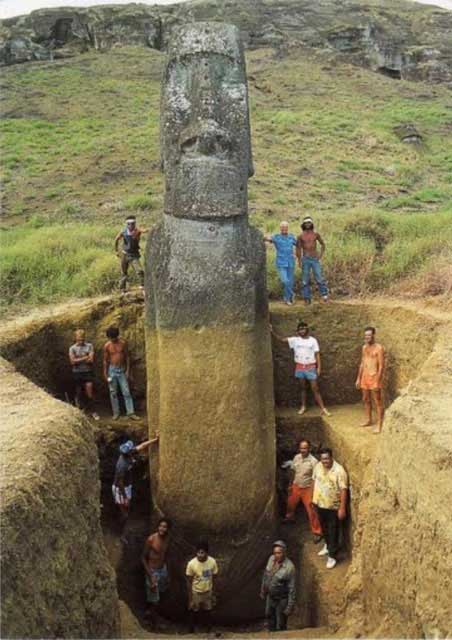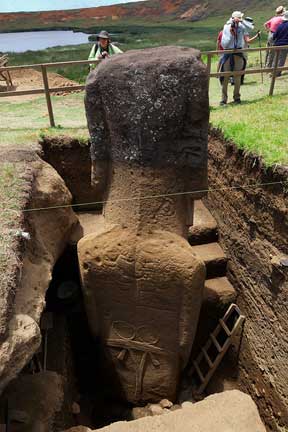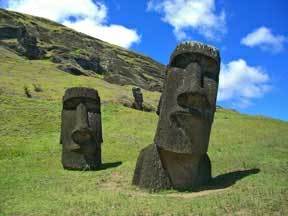There’s more to the world-famous heads of Easter Island than meets the eye.
Ask archaeologist Jo Anne Van Tilburg, a research associate at the UCLA Cotsen Institute of Archaeology and director of its Rock Art Archive, who has been lecturing and writing about Easter Island’s iconic monolithic statues for years.
She and her team of resident Rapa Nui have spent nine years locating and meticulously documenting the nearly 1,000 statues on the island, determining their symbolic meaning and function, and conserving them using state-of-the-art techniques.
After spending four months over the last two years excavating two of the statues and posting the results of their digs on the project’s website, Van Tilburg was surprised to discover that a large segment of the general public hadn’t realized that what they knew only as the Easter Island “heads” actually had bodies.
The two “heads” in the quarry where Van Tilburg’s team dug are standing figures with torsos, truncated at the waist, that have become partially buried by eroded dirt and detritus over centuries.
Learn more – Archaeologist digs deep to reveal Easter Island torsos


